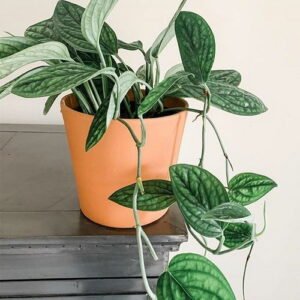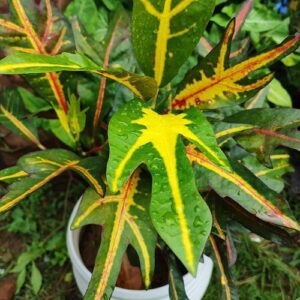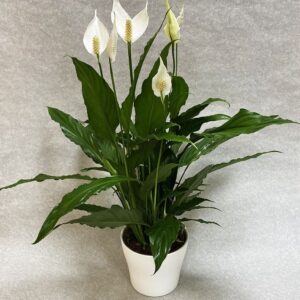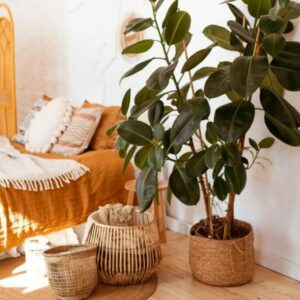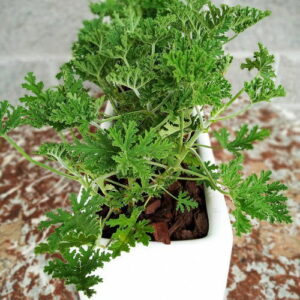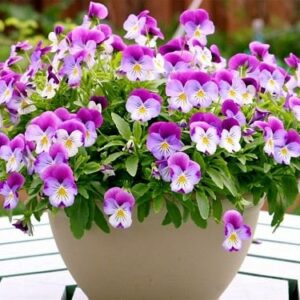
In the late ’80s, NASA and the Associated Landscape Contractors of America studied houseplants as a way to purify the air in space facilities. They found several plants that filter out common volatile organic compounds (VOCs).
Lucky for us, the plants can also help clean indoor air on Earth, which is typically far more polluted than outdoor air.
Other studies have since been published in the Journal of American Society of Horticultural Science, further proving the science.
Want to see the best plants?
Read on:
1. Peace lily (Spathiphyllum)

Shade and weekly watering are all the peace lily needs to survive and produce blooms.
It topped NASA’s list for removing all three of most common VOCs — formaldehyde, benzene and trichloroethylene. It can also combat toluene and xylene.
HGTV Gardens says peace lilies are renowned for their easy care. “The peace lily is hardy, forgiving, and will even let you know when it is thirsty — look for the telltale droop.”
Read: 31 Low Light Houseplants That You Shouldn’t Miss Out
2. Warneck dracaena (Dracaena deremensis ‘Warneckii’)

Combat pollutants associated with varnishes and oils with this dracaena.
The Warneckii grows inside easily, even without direct sunlight. With striped leaves forming clusters atop a thin stem, this houseplant can be striking, especially if it reaches its potential height of 12 feet.
This dracaena is known for its white stripes along the edges of its leaves.
If your plant gets brown tips on its leaves or brown streaks, it may be because of too much fluoride in your tap water, says SF Gate.
If that’s the case, try watering your plant with bottled H20.
3. English ivy (Hedera helix)

A study found that English ivy reduces airborne fecal-matter particles. It has also been shown to filter out formaldehyde found in some household cleaning products.
Although popular as a potted houseplant, the National Park Service doesn’t seem to be such a fan. The plant is called “an aggressive invader that threatens all vegetation levels of forested and open areas.”
Fortunately, ivy shouldn’t do much damage in a pot in your home. It grows best with moist soil and four or more hours of direct sunlight each day.
4. Chinese evergreen (Aglaonema Crispum ‘Deborah’)

This easy-to-care-for plant can help filter out a variety of air pollutants and begins to remove more toxins as time and exposure continues.
Even with low light, it will produce blooms and red berries.
Southern Living actually calls the Chinese evergreen “the easiest houseplant” because these plants thrive in low light and will grow in places where other plants won’t grow.
Because they are tropical, they like humid air. If your air is too try, tips might turn brown, so you might want to mist the leaves occasionally.
5. Azalea (Rhododendron simsii)

Bring this beautiful flowering shrub into your home to combat formaldehyde from sources such as plywood or foam insulation.
Because azaleas do best in cool areas around 60 to 65 degrees, they’re a good option for improving indoor air in your basement if you can find a bright spot.
If your house is dry, mist the plant every few days to create a friendlier, humid environment, suggests Flower Shop Network.
To help ward off disease, remove any dead leaves or blooms that fall into the soil. Fertilize in late winter and in early summer.
6. Red-edged dracaena (Dracaena marginata)
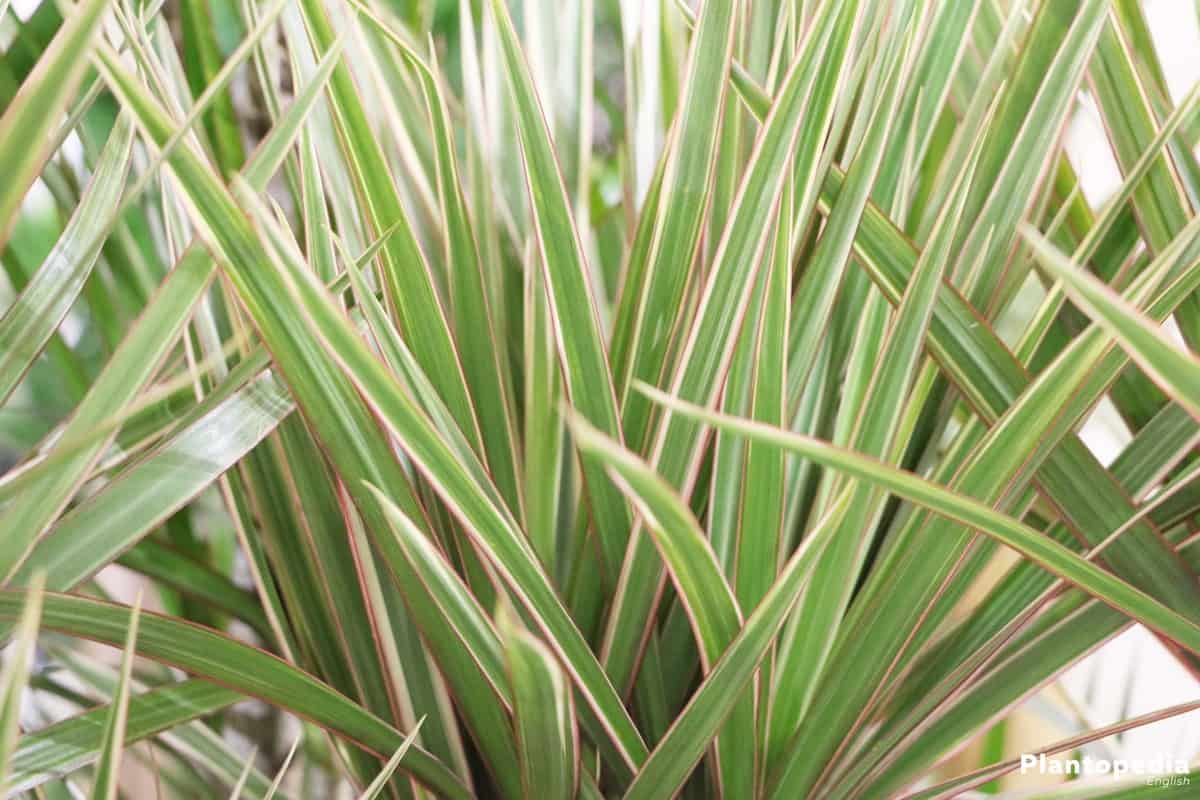
The red edges of this easy dracaena bring a pop of color, and the shrub can grow to reach your ceiling.
This plant is best for removing xylene, trichloroethylene and formaldehyde, which can be introduced to indoor air through lacquers, varnishes and gasoline.
There are many dracaena plants. This distinctive version is distinguished by the purple-red edges on its ribbon-like green leaves.
Although it grows slowly, it can eventually get as high as 15 feet tall, so maybe put it in a room with high ceilings and moderate sunlight, suggests This Old House.
7. Weeping fig (Ficus benjamina)

A Ficus in your living room can help filter out pollutants that typically accompany carpeting and furniture such as formaldehyde, benzene and trichloroethylene.
Caring for a Ficus can be tricky, but once you get the watering and light conditions right, they will last a long time.
The New York Botanical Garden says the weeping fig likes consistency and looks its best when grown in bright, indirect light. “It is challenged by dramatic temperature and light-level fluctuations.”
8. Heart leaf philodendron (Philodendron oxycardium)

This climbing vine plant isn’t a good option if you have kids or pets — it’s toxic when eaten, but it’s a workhorse for removing all kinds of VOCs.
Philodendrons are particularly good at battling formaldehyde from sources like particleboard.
Heart leaf philodendron are very low-maintenance plants. They thrive with indirect light and very little maintenance, according to the University of Florida.
The trailing vines can just fall from the container or can be trained to climb up a screen, trellis or pole.
9. Chrysanthemum (Chrysantheium morifolium)

The colorful flowers of a mum can do a lot more than brighten a home office or living room; the blooms also help filter out benzene, which is commonly found in glue, paint, plastics and detergent.
This plant loves bright light, and to encourage buds to open, you’ll need to find a spot near an open window with direct sunlight.
Want a plant to match your decor?
You’re usually in luck with mums. They come in nearly every color except true blue, according to Green Circle Growers.
When choosing a plant for indoors, make sure you choose a floral mum and not a garden variety, which does best when planted outdoors.
10. Golden pothos (Scindapsus aures)

Another powerful plant for tackling formaldehyde, this fast-growing vine will create a cascade of green from a hanging basket.
Consider it for your garage because car exhaust is filled with formaldehyde. (Bonus: Golden pothos, also known as devil’s ivy, stays green even when kept in the dark.)
Golden pothos plants need bright, indirect light.
Don’t overwater or you’ll end up with a case of root rot, reports Wisconsin Horticulture.
Heads up: Golden pothos is a poisonous plant and should be kept away from small children and pets.
11. Snake plant (Sansevieria trifasciata ‘Laurentii’)

Also known as mother-in-law’s tongue, this plant is one of the best for filtering out formaldehyde, which is common in cleaning products, toilet paper, tissues and personal care products.
Put one in your bathroom — it’ll thrive with low light and steamy humid conditions while helping filter out air pollutants.
You may also want to put a couple of these sharp-leafed plants in your bedroom, suggests This Old House. Interestingly, they absorb carbon dioxide and release oxygen at night (the opposite of the process most plants follow).
Sharing your room with these plants could give you a slight oxygen boost while you sleep.
12. Gerbera daisy (Gerbera jamesonii)
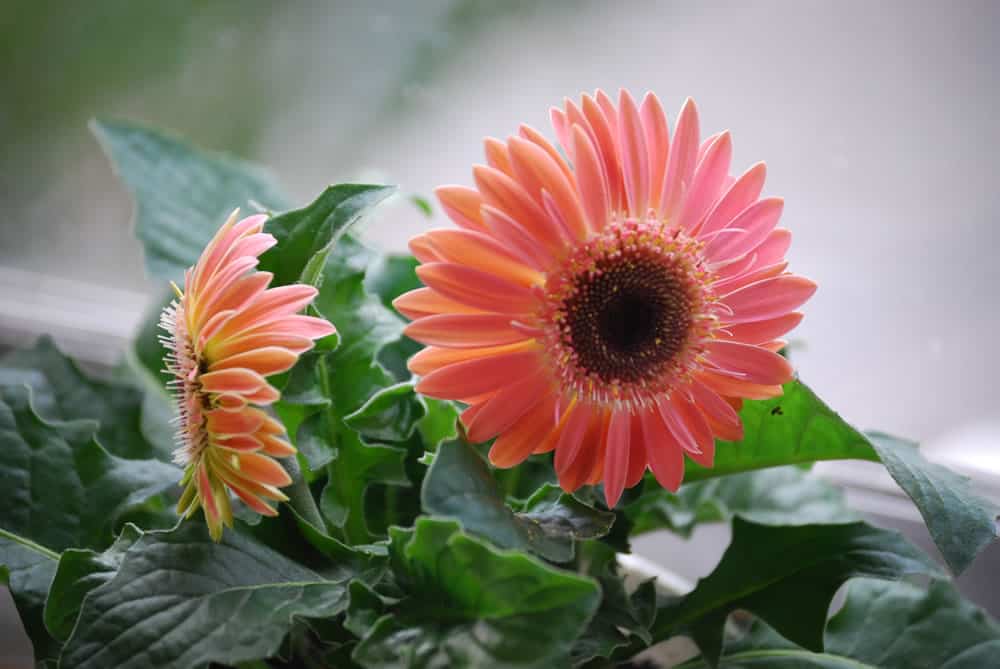
This bright, flowering plant is effective at removing trichloroethylene, which you may bring home with your dry cleaning.
It’s also good for filtering out the benzene that comes with inks. Add one to your laundry room or bedroom — presuming you can give it lots of light.
Gerberas (sometimes called gerber daisies) like well-drained soil, so be sure pots have drainage holes. Mist leaves a couple times a week and make sure plants get at least six hours of direct sunlight every day, suggests Gardens.com.
Brightly colored cut blooms can last as long as two weeks.
13. Spider plant (Chlorophytum comosum)

Even if you tend to neglect houseplants, you’ll have a hard time killing this resilient plant.
With lots of rich foliage and tiny white flowers, the spider plant battles benzene, formaldehyde, carbon monoxide and xylene, a solvent used in the leather, rubber and printing industries.
As an added bonus, this plant is also considered a safe houseplant if you have pets in the house. (Find more plants that are safe for pets.)
Also known as airplane plants, spider plants are also easy to regrow. Just cut off one of the “spiders” and place it in a pot.
Spider plants are incredibly easy to grow, but thrive in cool-to-average home temperatures and prefer dry soil. Bright indirect sunlight keeps them growing best. Learn more about spider plant care.
14. Aloe (Aloe vera)
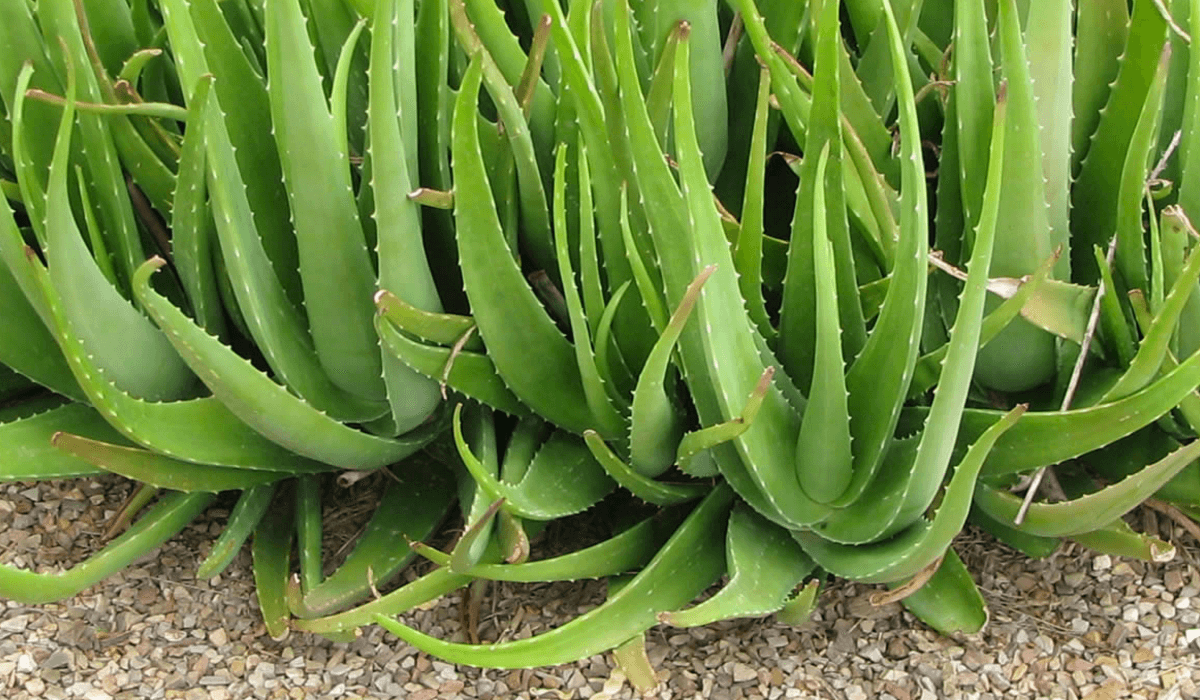
This easy-to-grow, sun-loving succulent helps clear formaldehyde and benzene, which can be a byproduct of chemical-based cleaners, paints and more.
Aloe is a smart choice for a sunny kitchen window. Beyond its air-clearing abilities, the gel inside an aloe plant can help heal cuts and burns.
People have been using aloe vera for more than 6,000 years when it was known as “the plant of immortality” in early Egypt, according to the National Institutes of Health. It was used for skin conditions and to heal wounds, as well as used as a laxative.
Today, although the science is lacking, aloe vera is typically used topically for sunburns, burns, abrasions and other skin conditions.
15. Bamboo palm (Chamaedorea sefritzii)

Also known as the reed palm, this small palm thrives in shady indoor spaces and often produces flowers and small berries.
It tops the list of plants best for filtering out both benzene and trichloroethylene. This plant is also a good choice for placing around furniture that could be off-gassing formaldehyde.
Native to Mexico and Central America, this compact palm only grows about 5-7 feet tall.
It prefers humidity, bright, indirect light, and doesn’t do well when it is overwatered.
It does best in temps of 65 to 80 degrees.
Conclusion
Houseplants are scientifically proven to help boost air quality, and far too many households aren’t using them because they just don’t know which ones to go for.
You don’t need complicated plants to achieve a greener indoor-spaces, there are plenty of houseplants that are simple and will allow you to attain your gardening objectives.
And you’ve just read about 15 epic houseplants for improving indoor air quality.
So it’s time for you to filter out common volatile organic compounds (VOCs) in your interiors by planting some of these houseplants.
Finally, you can enjoy a breath of fresh air!
Let me know your thoughts.
